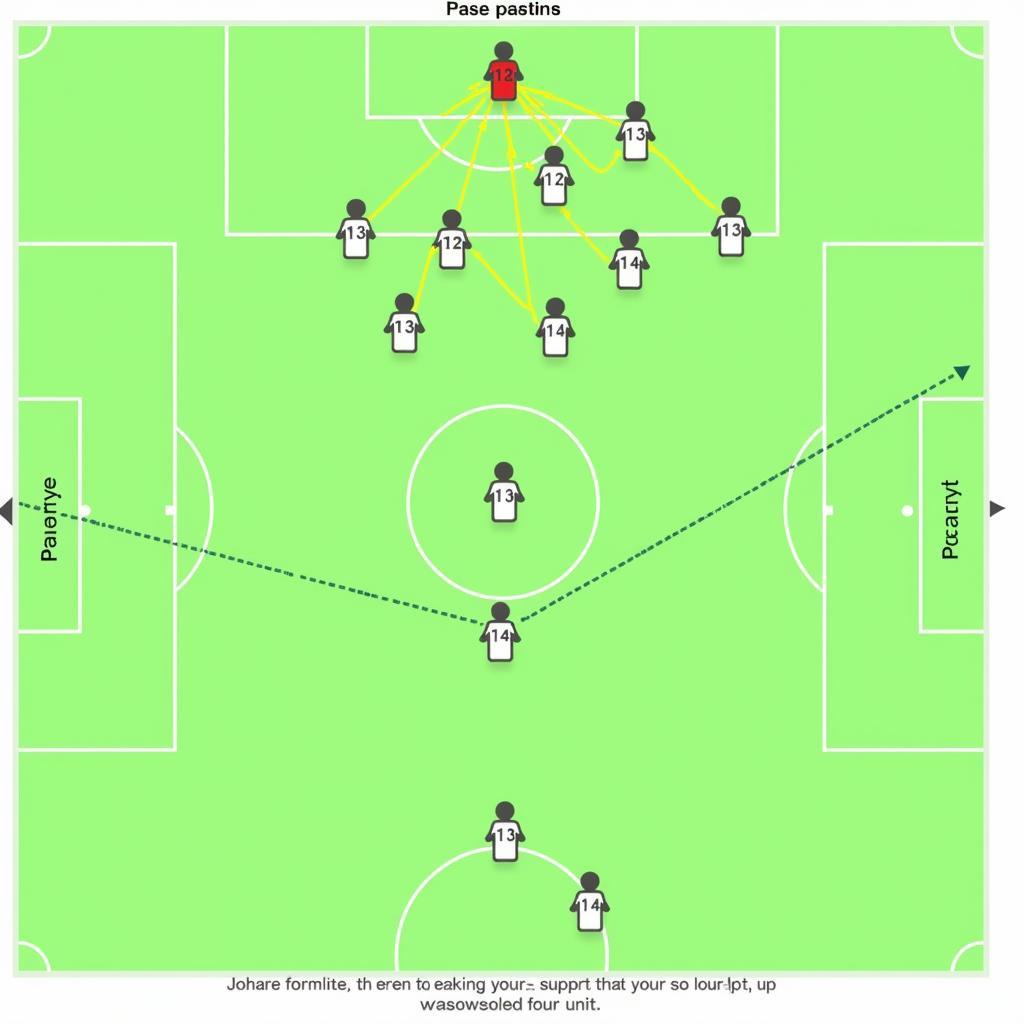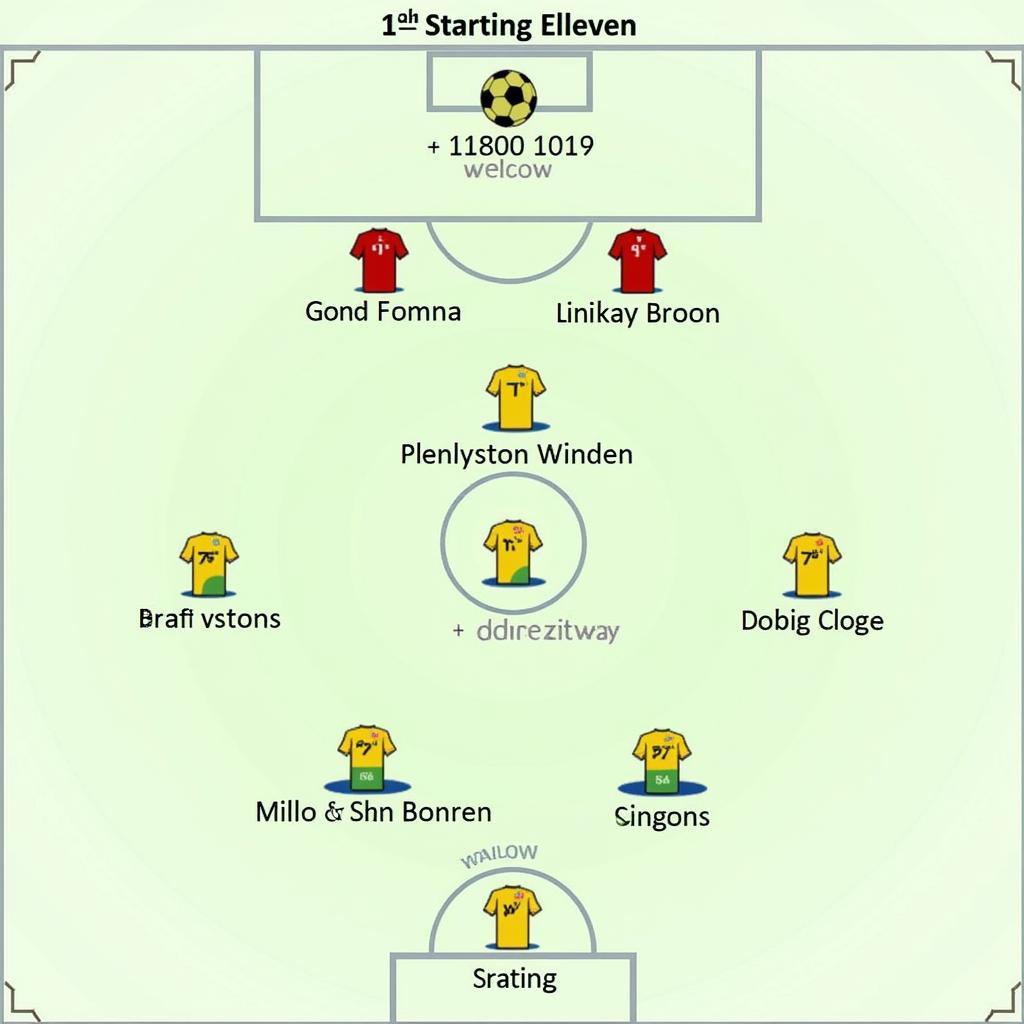Starting Eleven: Crafting the Perfect Football Team
January 14, 2025The starting eleven, those 11 players chosen to begin a football match, represent the core strength and strategic vision of a team. Selecting the right combination of talent, skill, and tactical awareness is crucial for achieving success on the pitch. This article delves into the intricacies of forming a winning starting eleven, exploring various formations and the key considerations for choosing the optimal players for each position.
Understanding the Importance of the Starting Eleven
A team’s starting eleven is much more than just a collection of individuals; it’s a complex ecosystem where every player’s role contributes to the overall effectiveness of the unit. From the goalkeeper to the strikers, every position holds a specific significance in dictating the flow of play. The choice of a starting eleven sets the tone for a match, influencing the team’s tactical approach and its ability to control the game. Getting the starting eleven right can be the difference between victory and defeat.
 Starting Eleven Formation
Starting Eleven Formation
Key Factors in Selecting a Starting Eleven
Several key factors influence the selection of a starting eleven. The chosen formation is a primary consideration, dictating the number of defenders, midfielders, and forwards. Current form and fitness levels of players are also crucial, ensuring that the selected individuals are capable of performing at their best. The opposition’s strengths and weaknesses must also be carefully analyzed, allowing for strategic player selections that can exploit vulnerabilities and neutralize threats. Finally, a manager must consider the individual playing styles of his players and ensure they complement each other effectively.
The Impact of Formation
Different formations require different player attributes and skill sets. A 4-4-2 formation, for instance, demands strong wing play and central midfield dominance, while a 4-3-3 might prioritize creative midfielders and pacy wingers. Understanding these nuances is vital for assembling a starting eleven that fits the chosen tactical approach. Check out how the number of players is regulated in luật số cầu thủ trong 1 đội bóng.
Analyzing Player Roles within the Starting Eleven
Each position within the starting eleven has distinct responsibilities that contribute to the team’s overall performance. The goalkeeper is the last line of defense, responsible for preventing goals. Defenders protect the goal and build attacks from the back. Midfielders control the tempo of the game, distributing the ball and creating chances. Forwards, on the other hand, are primarily tasked with scoring goals. A well-balanced starting eleven requires players who excel in their respective roles and can work seamlessly together. Want to know about the starting lineup for a specific Vietnam match? See các cầu thủ ra sân của việt nam gặp.
 Player Roles in Football
Player Roles in Football
How many players are on a team? A standard football team consists of eleven players, including the goalkeeper. Learn more about team size regulations at đội bóng có bao nhiêu cầu thủ.
“Choosing the right starting eleven is like conducting an orchestra. You need the right instruments playing in harmony to create a masterpiece,” says fictional renowned football tactician, Johan Cruyff Jr.
Adaptability and Tactical Flexibility
While a starting eleven provides the initial framework, tactical flexibility is crucial in modern football. Managers often need to adjust their team’s shape and personnel during a match based on the flow of play. Substitutions play a vital role in this regard, allowing for fresh legs, tactical shifts, and the introduction of specialists. A well-rounded starting eleven should therefore include players capable of adapting to different roles and formations.
“A manager must be prepared to adapt his starting eleven to the changing dynamics of a match. The ability to make decisive substitutions can often be the key to victory,” comments fictional former Premier League manager, Sir Alex Ferguson II.
Conclusion
Building a successful starting eleven is a complex and multifaceted process. From understanding formations and player roles to analyzing the opposition and considering tactical flexibility, numerous factors influence the final selection. A well-chosen starting eleven forms the foundation for a team’s success, providing the necessary balance, skill, and tactical acumen to compete at the highest level. Mastering the art of crafting the perfect starting eleven is a continuous journey of learning, adaptation, and strategic decision-making. What are some interesting European-Vietnamese players? Find out at đội hình 11 cầu thủ châu âu gốc việt. Curious about footballers carrying water? See cầu thủ xách nước phimmoi.
FAQ
-
How many players are in a starting eleven?
A starting eleven in football consists of 11 players. -
What are the main positions in a starting eleven?
The main positions include goalkeeper, defenders, midfielders, and forwards. -
Why is the starting eleven so important?
It sets the tone and tactical approach for the match. -
How does formation affect the starting eleven?
Different formations require different player attributes and skills. -
What role do substitutions play?
They allow for tactical changes and fresh legs during the match.
Need assistance? Contact us at Phone Number: 0396443476, Email: [email protected] or visit us at 23 Tháng 3, Đắk Nia, Gia Nghĩa, Đắk Nông, Việt Nam. We have a 24/7 customer service team.